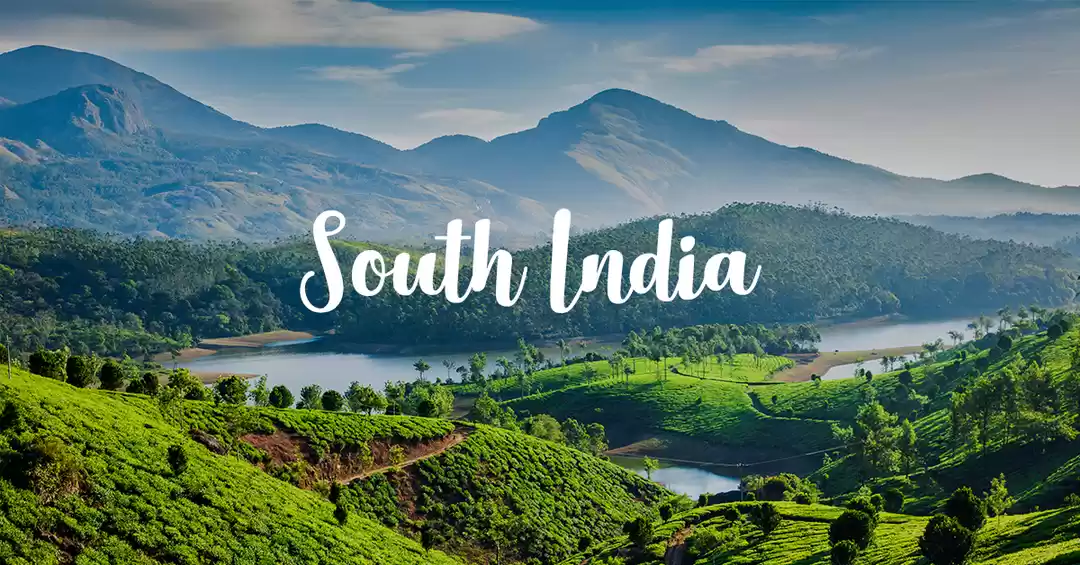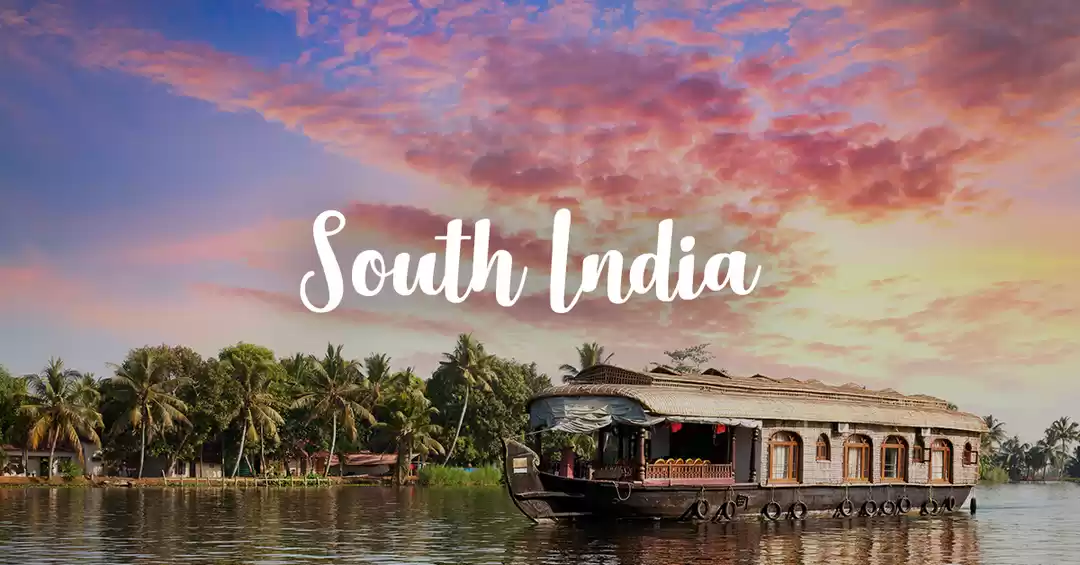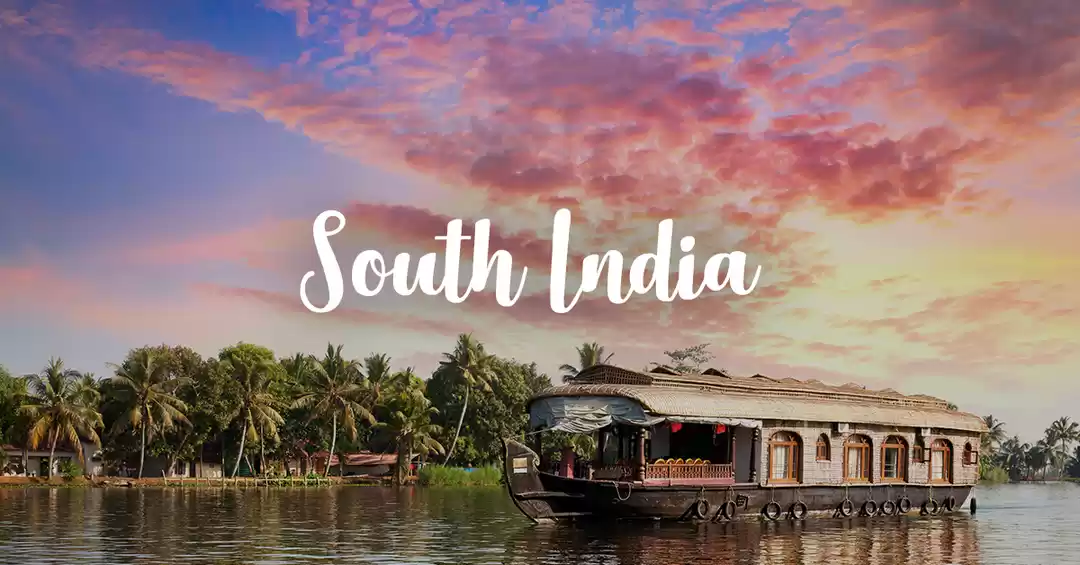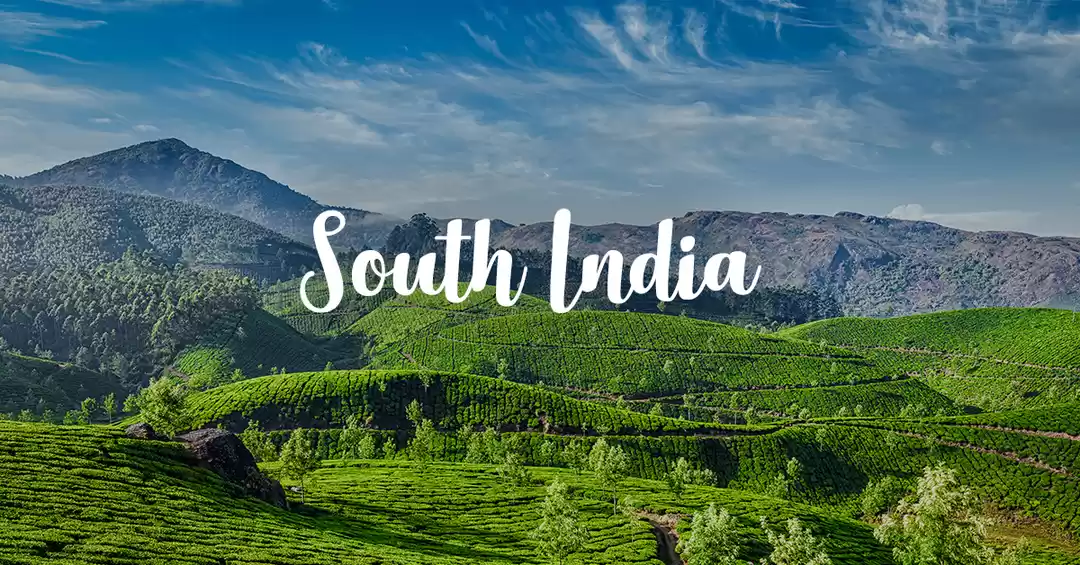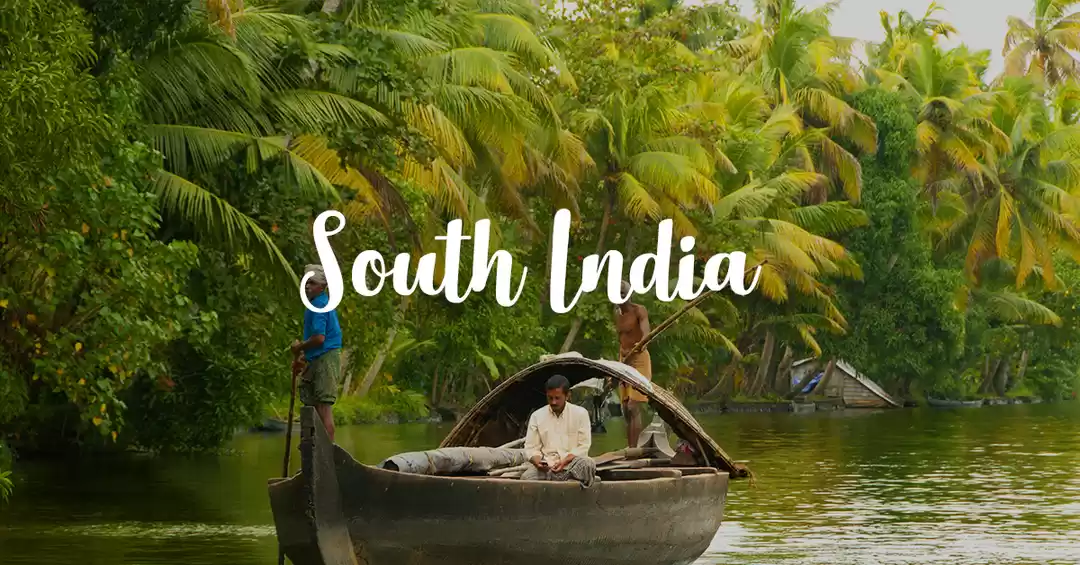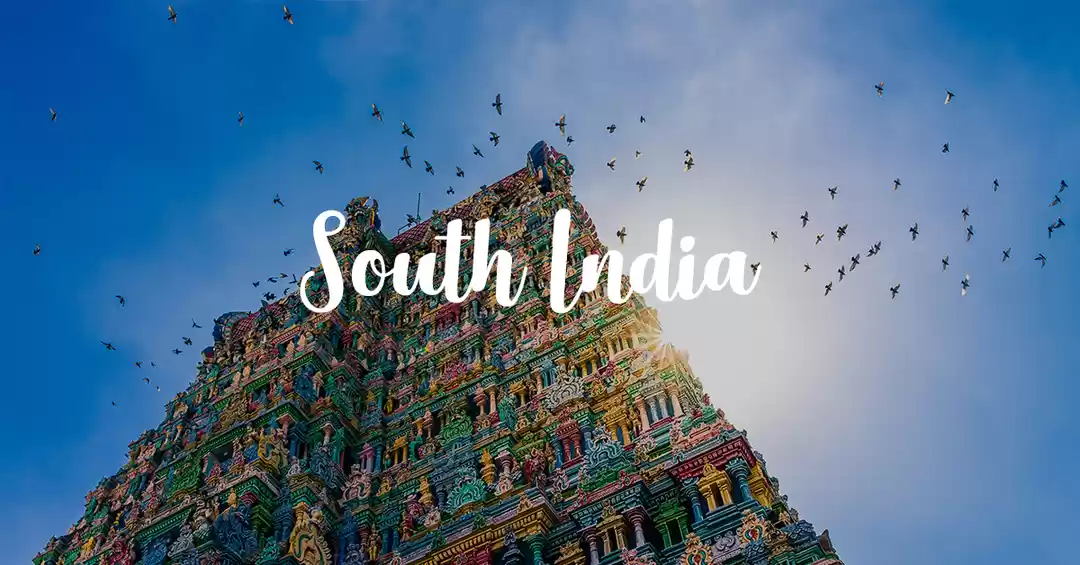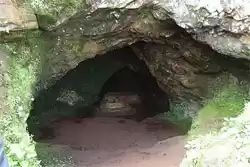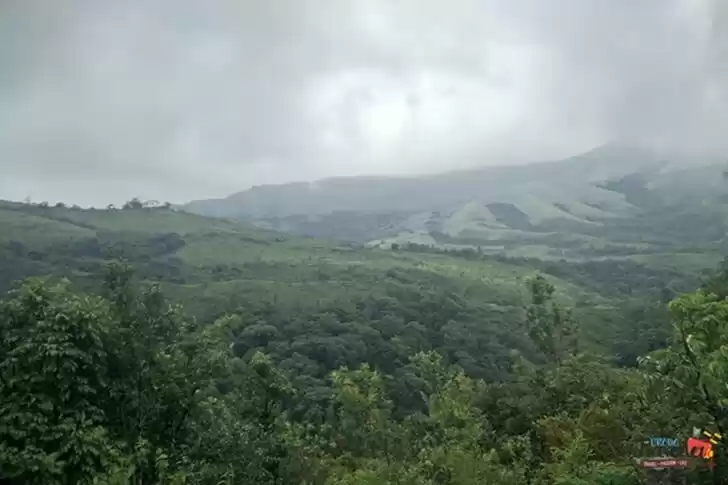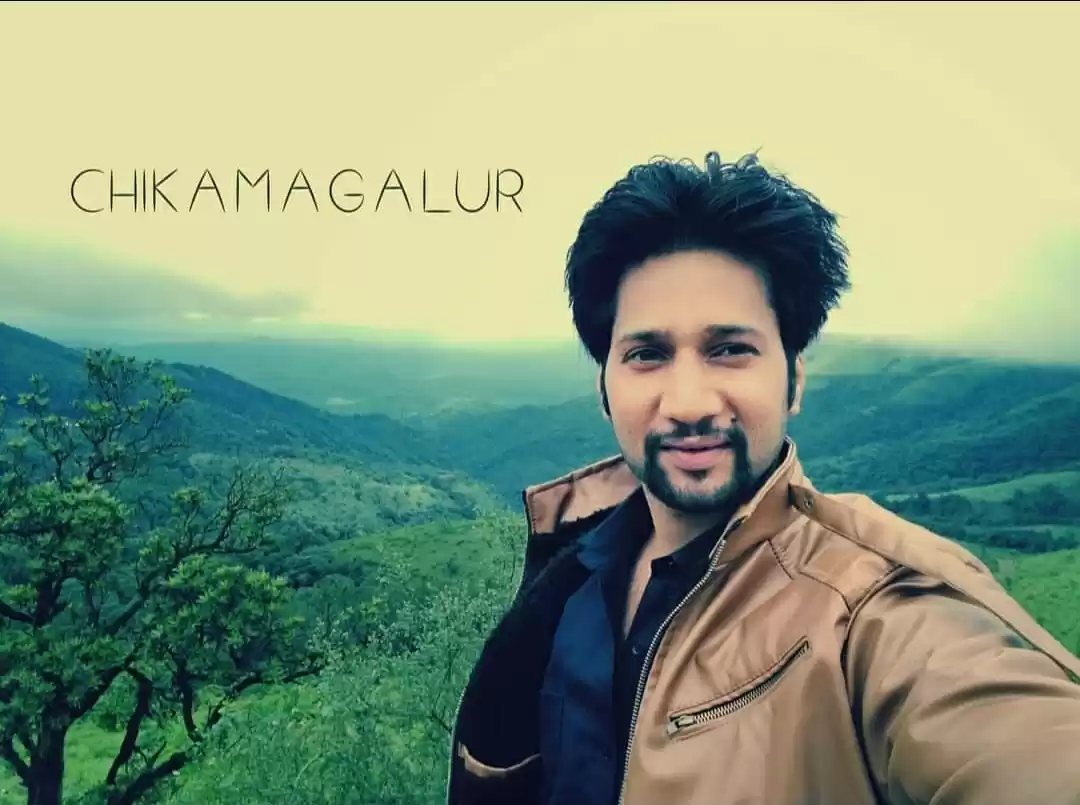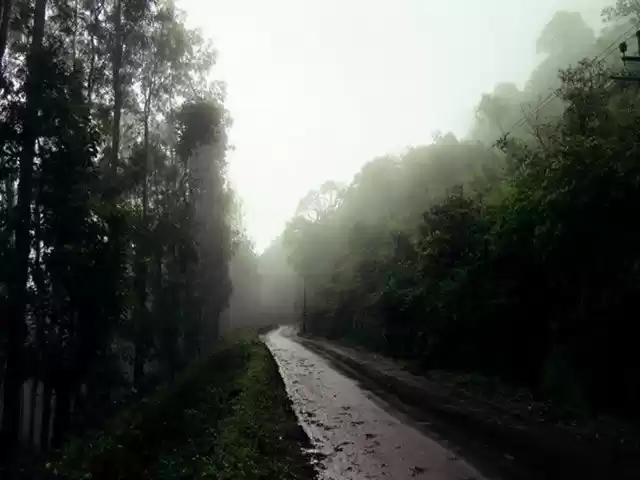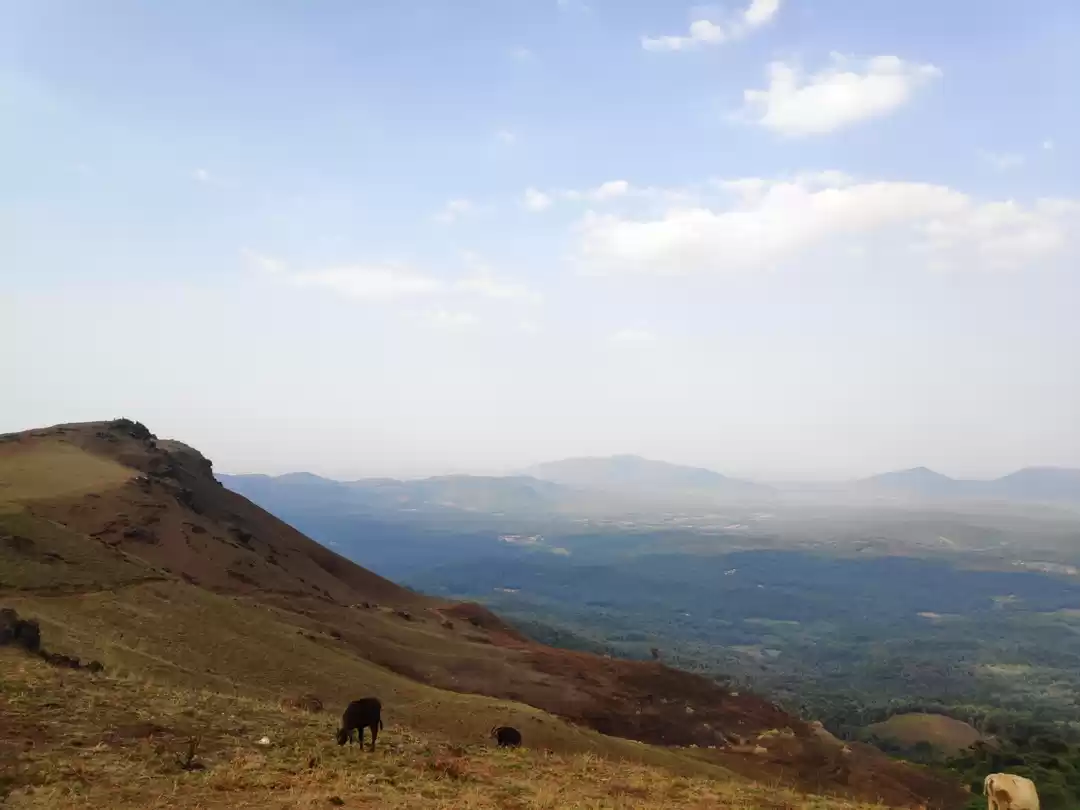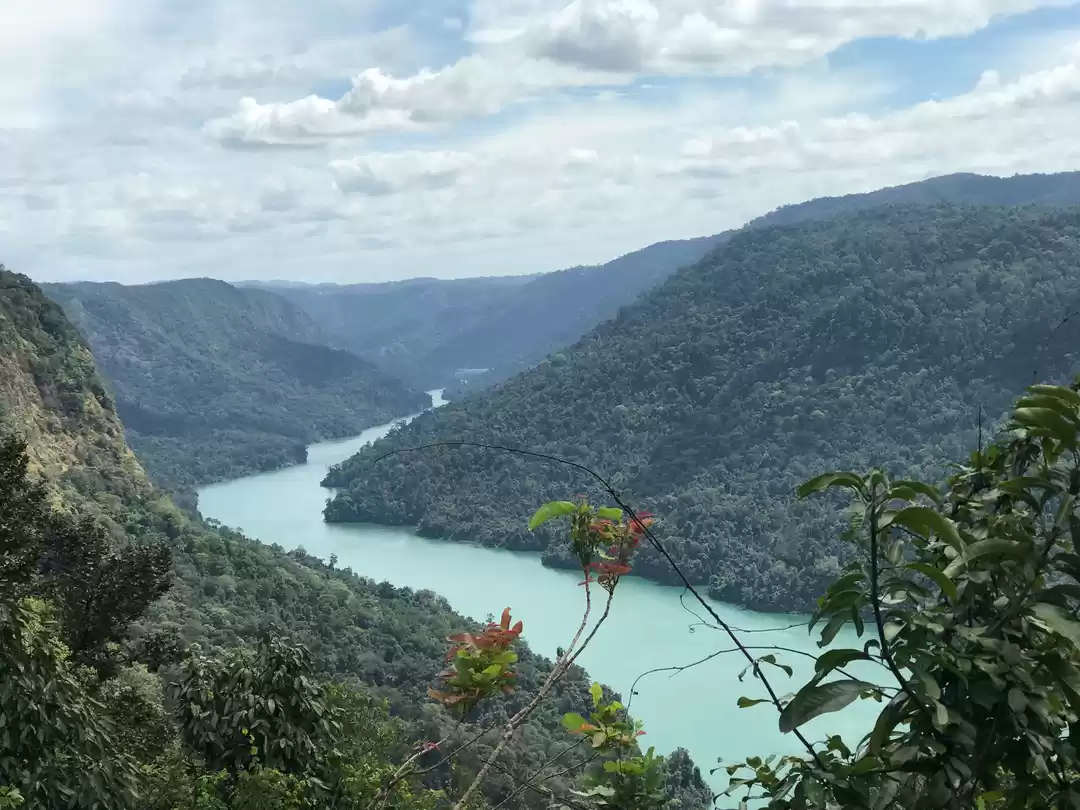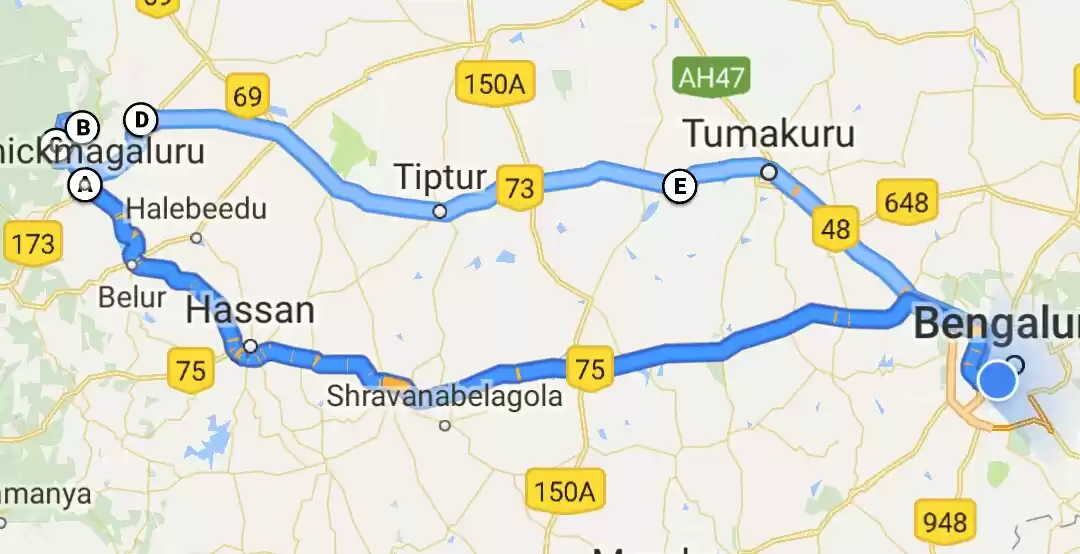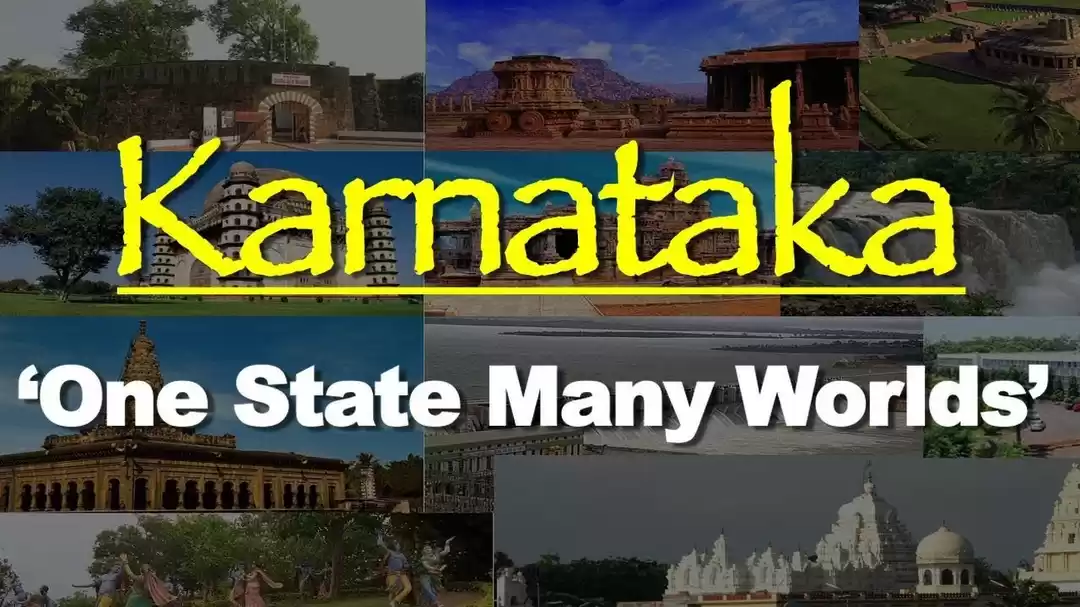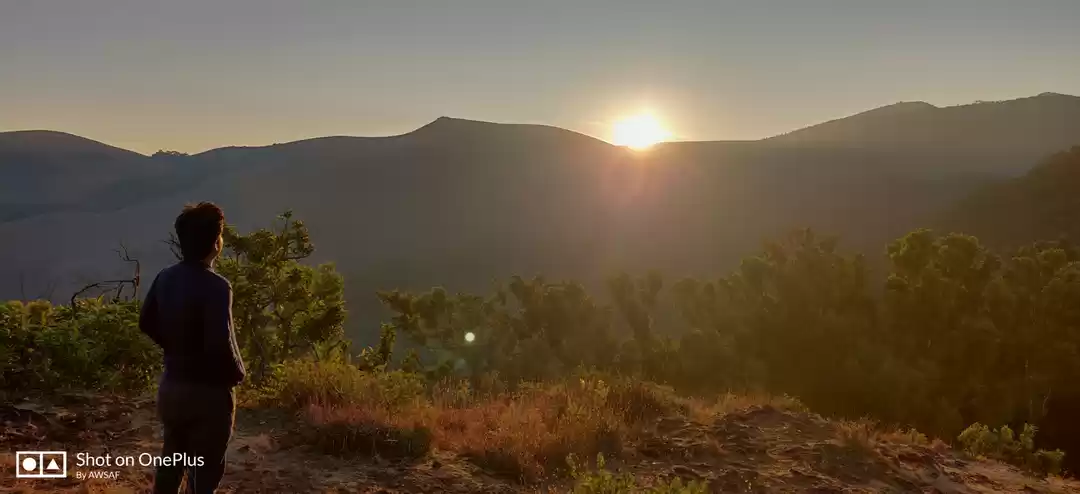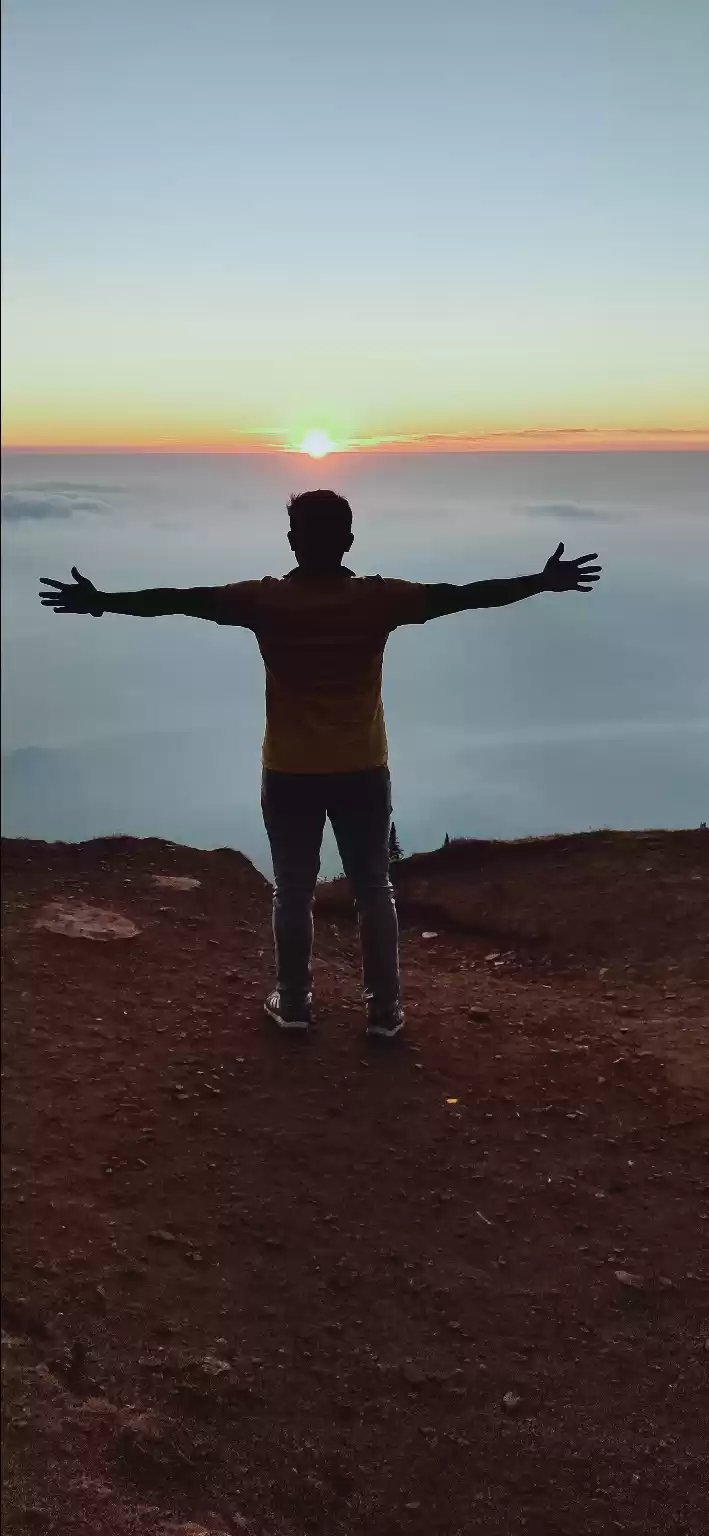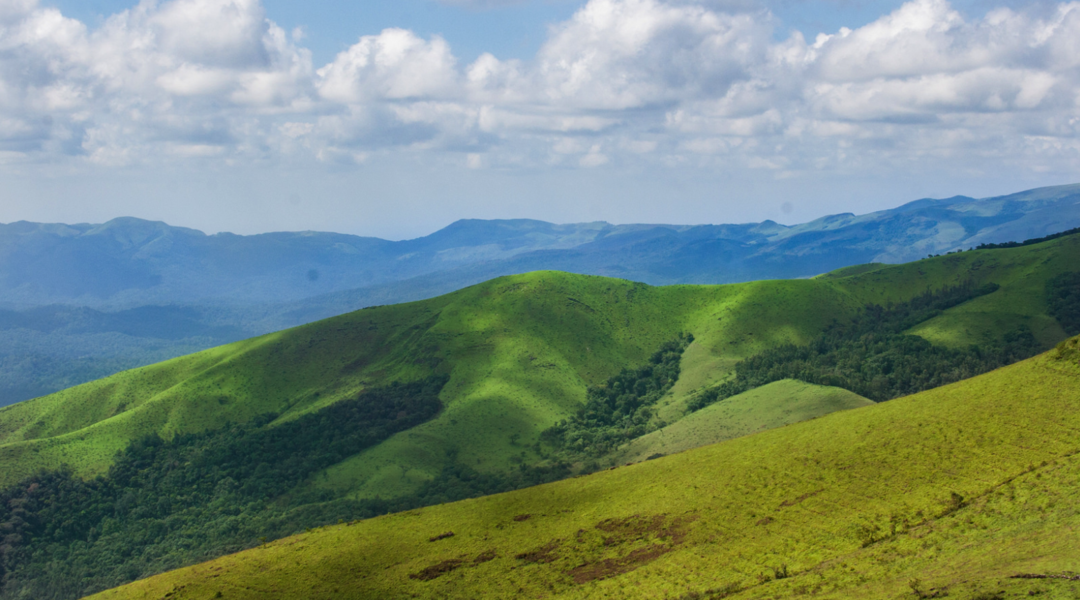
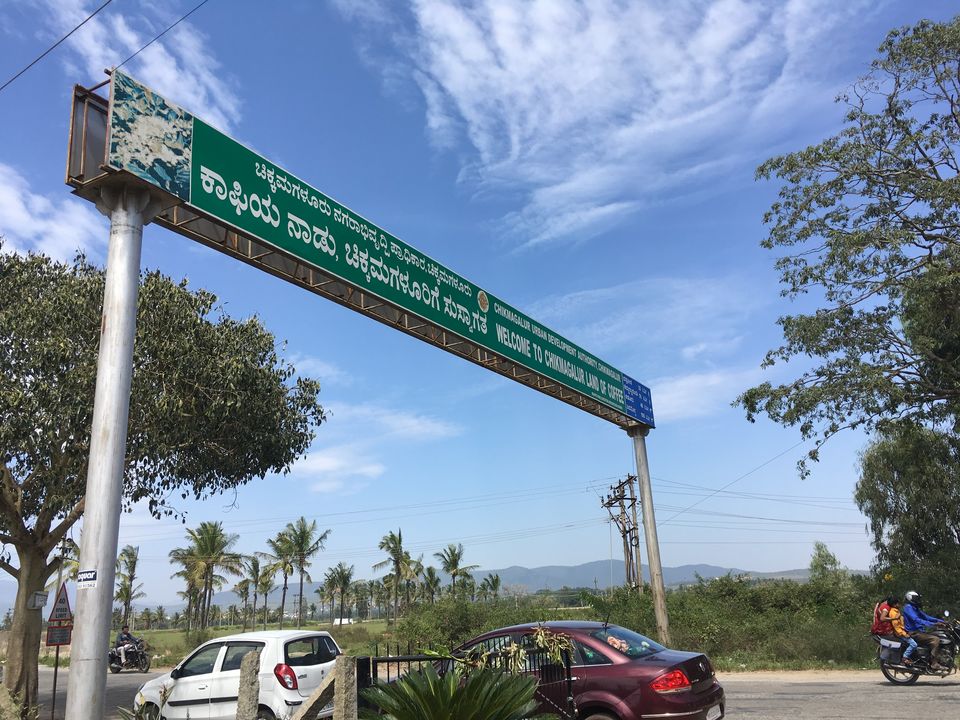
“Welcome to the Land of Coffee”, the tall green highway hoarding proclaims as you reach the outskirts of Chikmagalur town after a four hour-long drive from Bengaluru. The smooth velvety Bangalore Mangalore highway is a dream to drive on, and perhaps a reason on its own to plan this road trip. But yes, it is a long one, so plan to relax and unwind on Day 1. But after that, there’s a whole lot to see and do.
The many sights of Chikmagalur town
At first sight, it is a sleepy little town. And it is, for the most part. But there are some interesting eating houses to dive into, shops to get pick up the wonderful local produce from and (if you are lucky) ghosts of the British Raj to fraternize with.

Hearty dosas, coffee and gulab jamun at Town Canteen
Yes, you read that right! And they make for an excellent (albeit rather rich) way to start your day. Located today on Rathnagiri Road, it was set up under a tree in the 1960s with the specific intent of catering to the hungry and not-in-the-least health conscious students of the polytechnic college nearby. This hole-in-the-wall eatery has stood the tests of time and fancier, innovative eating joints. Once you tuck in to the Benne (butter) dosa, sip the coffee and take a bite of the jamun, you’ll be alright! It opens between 7 AM and 12 PM and once again between 3 PM and 8 PM. Tuesday is the weekly holiday.
Know your Cup of Joe at the Coffee Museum
Head to the Coffee Yatra Museum, set up by the Coffee Board of India to give every coffee aficionado a wonderful description of not just the history of coffee but the process of picking, grinding and drying the beans. Except for coffee tasting, it provides a thorough, immersive experience. Open between the hours of 10 in the morning and 7 in the evening, the museum is closed on weekends. Plan to spend about an hour or so here.
Dig into wonderful Italian fare at Cafe Agape
Down the road from Town Canteen, beside Bhuvanendra School, is Cafe Agape, a definite favorite when it comes to all things Italian. Their freshly baked pizzas, pastas and pastries are delectable, the ambience pleasant and the staff very courteous. It is a good place for a relaxed and rather reasonable midday pit stop. Do try their melt-in-the-mouth brioche buns.

Buy like the locals do at Namma Angady on M.G. Road
If you only have time to dive into one shop, head to Namma Angady. This is cozy little shop with many varieties of spices, coffee as well as sweet and savory treats. Pick up some dried mango slices for the day. They also blend and sell their own coffee.
Tiffins anyone?
While there are plenty of options, at the end of M.G. Road, just before it is intersected by Post Office Road is Hotel Mayura Deluxe and Residency - a busy little dive-in where you can get at those hunger pangs with Bonda Soup, Masala Dosas and (of course!) a cup of wonderful filter coffee.

Soak in the ghosts of the British Raj at the Kadur Club
The century old Kadur Club is situated on Spencer Road, at the heart of Chikmaglur town. Originally run by British planters, the club stands as a reminder of its colonial roots - with the Shikhar trophies, bison heads, stags and a grand dining hall. Today, membership is restricted to the coffee planters’ community in the area, so it helps to reach out to a planter if you know one.

In the lap of nature
Much of Chikmaglur’s beauty and fame lies in its lush, green environs. Part of the Western Ghats, Baba Budangiri is a range of hills which has caves considered holy. Forest and grassland trails lead up to Mullayanagiri, the highest peak in the state of Karnataka. The cascading Hebbe Falls are nestled within coffee plantations. And the forested Bhadra Wildlife Sanctuary is home to elephants, tigers and leopards.

On the trail of the saint who started it all, at Baba Budangiri
The 16th Century Sufi saint Baba Budan, revered by both Muslims and Hindus, is said to have introduced the coffee plant to India by smuggling seven raw beans from the port of Mocha, Yemen while coming back from the Haj pilgrimage. In those days, coffee was exported to other parts of the world in roasted or baked form so that no one could grow their own and were forced to buy from the Yemenis. On his return, he planted the beans on the slopes of the Chandragiri hills, which also houses his tomb.
Today these hills are known as the Baba Budangiri range of hills. They present fantastic panoramic views and house caves, waterfalls near Attigundi and the Galikere lake. Unique, purplish mountain flowers called neelakurinji bloom in these hill ranges once every 12 years and 2018 is an expected year of bloom.
A word of caution though. Get there early, to avoid the hordes of pilgrims and holidaying folk making their way to the top. The roads see cars, minivans, buses and bikes - and the cacophony, traffic and confusion may make you forget that you are in the hills. A good alternative is to trek.
Trekking up to Mullayanagiri
The main peaks in the Baba Budangiri range are the Mullayanagiri (1930 m or 6317 feet) and Baba Budangiri (height 1895 m) peaks. Collectively, these peaks are known as the Chandradrona Mountain Range as they naturally form the shape of a crescent moon. Mullayanagiri is the highest peak in the Baba Budangiri range, and the fourth highest peak between the Himalayas and the Nilgiris. The trekking trail between Mullayanagiri and Baba Budangiri is popular, and several trekking enthusiasts attempt this before the Himalayas.
Meandering through coffee plantations: Discovering the Hebbe Falls
In coffee country, you must visit a coffee plantation. And if you don’t know a planter, then there is always Hebbe Falls. About 10 kilometres from Kemmangundi, these waterfalls are inside a coffee estate and can be reached either on foot or on a government approved forest jeep, which goes through private estates. However, the last kilometer needs to be trekked in order to reach the falls. And you must watch out for leeches, especially during the monsoons.
Hearty dosas, coffee and gulab jamun at Town Canteen
Yes, you read that right! And they make for an excellent (albeit rather rich) way to start your day. Located today on Rathnagiri Road, it was set up under a tree in the 1960s with the specific intent of catering to the hungry and not-in-the-least health conscious students of the polytechnic college nearby. This hole-in-the-wall eatery has stood the tests of time and fancier, innovative eating joints. Once you tuck in to the Benne (butter) dosa, sip the coffee and take a bite of the jamun, you’ll be alright! It opens between 7 AM and 12 PM and once again between 3 PM and 8 PM. Tuesday is the weekly holiday.
Know your Cup of Joe at the Coffee Museum
Head to the Coffee Yatra Museum, set up by the Coffee Board of India to give every coffee aficionado a wonderful description of not just the history of coffee but the process of picking, grinding and drying the beans. Except for coffee tasting, it provides a thorough, immersive experience. Open between the hours of 10 in the morning and 7 in the evening, the museum is closed on weekends. Plan to spend about an hour or so here.
Dig into wonderful Italian fare at Cafe Agape
Down the road from Town Canteen, beside Bhuvanendra School, is Cafe Agape, a definite favorite when it comes to all things Italian. Their freshly baked pizzas, pastas and pastries are delectable, the ambience pleasant and the staff very courteous. It is a good place for a relaxed and rather reasonable midday pit stop. Do try their melt-in-the-mouth brioche buns.

Buy like the locals do at Namma Angady on M.G. Road
If you only have time to dive into one shop, head to Namma Angady. This is cozy little shop with many varieties of spices, coffee as well as sweet and savory treats. Pick up some dried mango slices for the day. They also blend and sell their own coffee.

Tiffins anyone?
While there are plenty of options, at the end of M.G. Road, just before it is intersected by Post Office Road is Hotel Mayura Deluxe and Residency - a busy little dive-in where you can get at those hunger pangs with Bonda Soup, Masala Dosas and (of course!) a cup of wonderful filter coffee.

Soak in the ghosts of the British Raj at the Kadur Club
The century old Kadur Club is situated on Spencer Road, at the heart of Chikmaglur town. Originally run by British planters, the club stands as a reminder of its colonial roots - with the Shikhar trophies, bison heads, stags and a grand dining hall. Today, membership is restricted to the coffee planters’ community in the area, so it helps to reach out to a planter if you know one.

In the lap of nature
Much of Chikmaglur’s beauty and fame lies in its lush, green environs. Part of the Western Ghats, Baba Budangiri is a range of hills which has caves considered holy. Forest and grassland trails lead up to Mullayanagiri, the highest peak in the state of Karnataka. The cascading Hebbe Falls are nestled within coffee plantations. And the forested Bhadra Wildlife Sanctuary is home to elephants, tigers and leopards.

On the trail of the saint who started it all, at Baba Budangiri
The 16th Century Sufi saint Baba Budan, revered by both Muslims and Hindus, is said to have introduced the coffee plant to India by smuggling seven raw beans from the port of Mocha, Yemen while coming back from the Haj pilgrimage. In those days, coffee was exported to other parts of the world in roasted or baked form so that no one could grow their own and were forced to buy from the Yemenis. On his return, he planted the beans on the slopes of the Chandragiri hills, which also houses his tomb.
Today these hills are known as the Baba Budangiri range of hills. They present fantastic panoramic views and house caves, waterfalls near Attigundi and the Galikere lake. Unique, purplish mountain flowers called neelakurinji bloom in these hill ranges once every 12 years and 2018 is an expected year of bloom.
A word of caution though. Get there early, to avoid the hordes of pilgrims and holidaying folk making their way to the top. The roads see cars, minivans, buses and bikes - and the cacophony, traffic and confusion may make you forget that you are in the hills. A good alternative is to trek.
Trekking up to Mullayanagiri
The main peaks in the Baba Budangiri range are the Mullayanagiri (1930 m or 6317 feet) and Baba Budangiri (height 1895 m) peaks. Collectively, these peaks are known as the Chandradrona Mountain Range as they naturally form the shape of a crescent moon. Mullayanagiri is the highest peak in the Baba Budangiri range, and the fourth highest peak between the Himalayas and the Nilgiris. The trekking trail between Mullayanagiri and Baba Budangiri is popular, and several trekking enthusiasts attempt this before the Himalayas.
Meandering through coffee plantations: Discovering the Hebbe Falls
In coffee country, you must visit a coffee plantation. And if you don’t know a planter, then there is always Hebbe Falls. About 10 kilometres from Kemmangundi, these waterfalls are inside a coffee estate and can be reached either on foot or on a government approved forest jeep, which goes through private estates. However, the last kilometer needs to be trekked in order to reach the falls. And you must watch out for leeches, especially during the monsoons.



